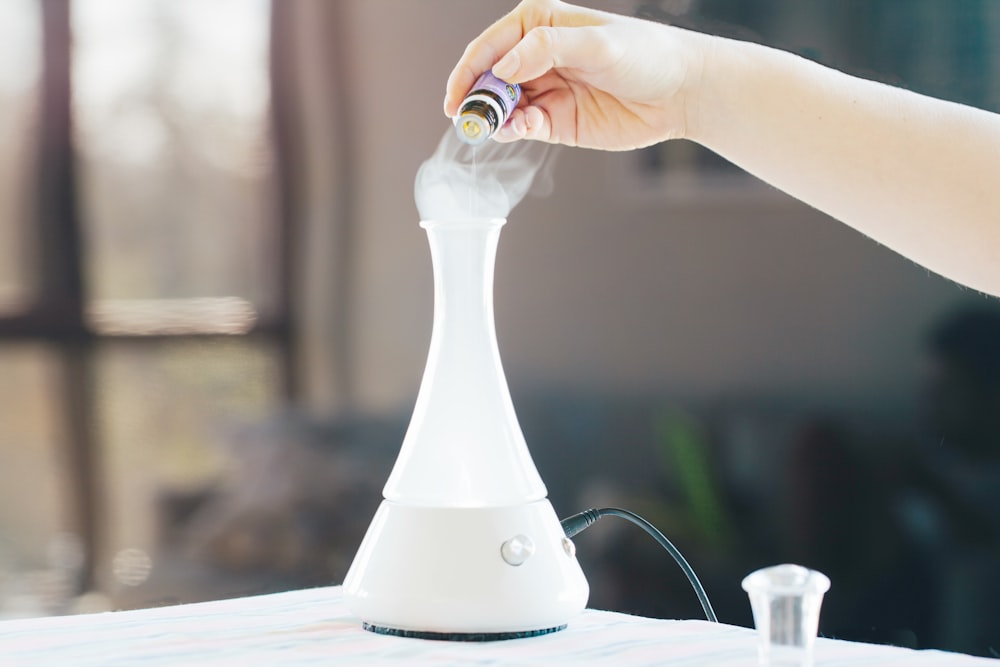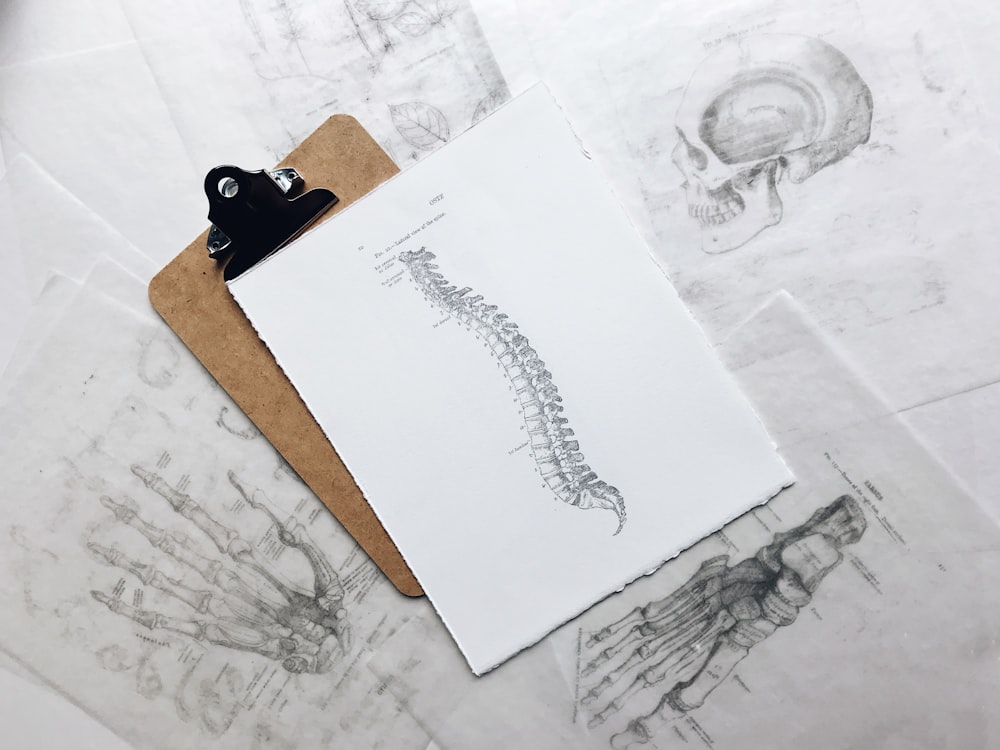Natural Ways to Manage Sciatica
Sciatica is a condition involving structural affectation on the spine. It is estimated that 40% of the human population will have sciatica in the course of their lifetime. In fact, sciatica is one of the most common causes of why the ageing population seeks medical attention not only in the United States but around the world.
In this blog post, we will take a quick review of what sciatica is, what causes the pain which arises from sciatica, the most common signs and symptoms, what factors cause sciatica to flare up or get triggered, as well as the natural ways to manage Sciatica.
To fully understand all of these, let us begin with the basics, starting with the general definition of Sciatica.
So, What is Sciatica?
Sciatica, also known and referred to as Sciatic Nerve Pain by patients, is a medical condition that involves the irritation or compression of the largest nerve in the leg — the sciatic nerve.
This nerve is believed to be the longest nerve in the body. It extends from the back of our pelvis, and trails down all the way through the buttocks, to each side of the leg.
Although sciatica pain can vary widely, sciatica is oftentimes described as a shooting, sharp pain or radiating pain in the leg. So, if you have a mild to severe ache or sharp pain that radiates from your vertebral column passing through your buttocks and down to the back of your leg, you might as well talk to your primary physician and ask if you may be experiencing sciatica.
What are the Risk Factors Related To Sciatica and What Triggers Sciatic Nerve Pain?
Now that we know “what is sciatica,” the next thing that you are probably asking is “what are the risk factors for someone to develop sciatica?”.
In general, it is not just due to ageing or the degeneration of the bits and pieces of our spinal column. Factors that may cause the development or trigger sciatica may vary from one person to another. The common ones that may cause sciatica to develop or flare-up are listed below:
- damage to the vertebra such as herniation or bulging of the intervertebral disc
- depression
- excessive weight
- chronic infection in the vertebral column
- inherited spine abnormalities
- injury to the spinal column
- other disorders affecting the spine
- poor body mechanics
- poor posture
- pregnancy
- sitting for long periods with hard objects in the back pocket
- spinal injury
- stress or emotional anxiety
- a tumor in the spine
- wearing tight-fit clothing or footwear
What Body Part Gets Affected By Sciatica?
For us to easily identify and understand what body part gets affected by Sciatica, let us discuss the basics of human anatomy.
The Spine or Vertebra and the Spinal Nerves
Our spinal column is one of the most complex body parts that not only provides a structural framework to the body, but allows us to be flexible, and also protects the spinal nerves in our back. These spinal nerves that are housed within the vertebral column or spine serve as cables or channels that send and receive signals from our brain to the different parts of the body and vice versa.
For instance, when you accidentally touched a hot object, sensory nerves from your hand relays information (that you touched a warm object) to your brain. The spinal nerves deliver this information to the brain, and in turn, the brain responds by telling your hand, through the messenger/channel to take off your hand from the hot object. Can you imagine if there are no spinal nerves to relay these kinds of information? Or what happens when it gets injured?
The Spinal or Intervertebral Discs
The thirty-three bones of our spine are held in place and are connected by shock absorbers called the ‘spinal discs’ or the ‘intervertebral discs’. Their function is to allow our vertebral column to be flexible.
Inside these intervertebral discs are substances that have a gel-like texture. Any injury or damage to these spinal discs can break or damage the discs’ outer shell, causing the soft, gel-like material to herniate and bulge out of its shell covering. This bulging condition is known as a slipped disc, most commonly termed as a herniated disc.
Now, how do we know if one has sciatica? And what are the most common signs and symptoms?
How do you know if you have sciatica? What are the common signs and symptoms?
Sciatica is usually diagnosed through various diagnostic procedures. However, there are many ways to assess if you have one. One is by monitoring the most common signs and symptoms. If you have any of the manifestations of sciatica listed below, it might be best to consult with a physician:
Pain on one side of the leg
Pain from Sciatica varies. It can range from mild to severe. Some people also experience mild ache radiating from the lower back to the buttocks, while others experience sharp pain or burning sensation on either side of the lower extremity. In rare situations, patients experience excruciating pain, depending on how severe the nerve impingement or irritation is.
Tingling sensation, weakness, or numbness
These symptoms can occur alternatively or at the same time as a result of the exerted impingement or pressure on the sciatic nerves.
How does this happen? When the sciatic nerve gets pinched or compressed, it disrupts the normal physiologic function of the nerve, thereby causing either numbness, weakness, or tingling sensation on the affected part.
Impaired leg mobility or difficulty in moving the lower extremity
Individuals with sciatica may find it difficult to move the affected leg, stand, walk, or sit in due to pain. This, combined with other neurological manifestations of sciatica such as weakness or numbness of the lower extremities, sciatica can also disrupt activities of daily living.
Discomfort
Some sciatica sufferers report discomfort secondary to episodes of jolt or electric shock sensation in the lower back, buttocks, or legs. It is often triggered or aggravated when lifting objects, coughing, sneezing, sitting for long periods, or doing repetitive motions using the leg.
These signs and symptoms usually manifest for a couple of weeks. Sometimes, it lasts for a couple of years. However, even if you have sciatica, it won’t mean that you’ll have all the signs or symptoms listed above. It is important to note that not everyone will have the same sciatica symptoms because the causes, physiologic process, and severity of sciatica may differ from one person to another.
What are the Various Treatment Options for Sciatica Pain?
Treatment and management options for sciatica usually begin with adequate self-care and non-pharmacological or non-invasive methods.
Recently, patients with sciatica lean towards natural ways of treating the signs and symptoms. The goal of this form of treatment is not just to prevent flare-ups, but to improve function, deal with the cause of the problem, and prevent further injury.
Other treatment options for sciatica include pain relievers, surgical intervention, and administration of anti-inflammatory medications such as steroids.
What are the Natural Ways To Manage Sciatica Pain?
So far, we have tackled some of the most common questions with regards to the basic information about sciatica. We even listed various options to treat sciatica and manage its symptoms.
But, the good news is that there are also natural ways to relieve sciatica that do not involve puncturing or surgical procedures. Here are the most common ones:
1. Use of essential oils or aromatherapy
According to one study, there are significant therapeutic effects that essential oils and aromatherapy can offer in alleviating pain. This effect was compared to the placebos used in the control treatments.
If you haven’t utilized aromatherapy before and want to know what essential oils to use for back pains, here is our list:
Lavender Essential Oil
Lavender is probably the most popular essential oil for pain relief. It has anti-microbial properties and anti-inflammatory effects. This oil is particularly recommended to those looking for pain relief such as headaches, muscle tensions, or spasms, as well as joint pains for arthritis. Not only it can reduce sciatic back pain, but it can also aid in relaxation and avoid sciatica triggers such as stress. If you think that your sciatica flares up due to emotional anxiety, lavender might be the perfect option for you.
Eucalyptus Essential Oil
Eucalyptus essential oils are known to be useful for muscle pain and nerve pain. It has a warming and soothing effect, as well as anti-inflammatory and analgesic properties. With all its capabilities mentioned above, eucalyptus is the perfect choice to target sciatica symptoms of nerve pain and leg spasms. And even if you are not experiencing both symptoms at the same time, you can use eucalyptus essential oil to improve the circulation in your affected leg. How does eucalyptus essential oil improve circulation? Well, it promotes the flow of therapeutic cells in the area.

Peppermint Essential Oil
People use peppermint to treat headaches as well as muscle and joint aches. However, peppermint’s positive effects do not end there. This refreshing and uplifting essential oil contains active ingredients that have pain-relieving and anti-inflammatory properties.
Ginger Essential Oil
Ginger essential oils contain compounds called “sesquiterpene.” This compound bestows the ginger essential oil its analgesic, anti-inflammatory, and anti-spasmodic effects. Commonly used as a warming essential oil to ease pain due to arthritis and other illnesses, ginger works best if mixed or used with other essential oils. If you are looking for a warming effect to soothe your sciatic pain, the ginger essential oil can do the job.
Rosemary Essential Oil
Rosemary is widely used as a kitchen spice, but like lavender, it works wonders when it comes to pain relief. In fact, a study demonstrated that rosemary has analgesic effects and that it has therapeutic potential for relieving different kinds of pain. While rosemary can make you think about chicken with spices and herbs, it can be used to ease your sciatica pain too!
Wintergreen Essential Oil
Wintergreen is one of the effective essential oil solutions for immediate pain relief. Although not a popular essential oil, it is highly effective. Why? Because it contains methyl salicylate, which is the main component and the active ingredient of aspirin. It is particularly helpful to those who also experience leg spasms secondary to sciatica because it reduces the irritation and compression of the sciatic nerve. Aside from that, it can provide relief for other nerve pains, as well as arthritis, headaches, and dysmenorrhea.
Helichrysum Essential Oil
Many researchers report that helichrysum essential oil may be the fastest acting pain relief compared to other essential oils. It has anti-inflammatory, anti-spasmodic, mild sedative, and analgesic properties. Plus, it also helps in cell regeneration, which may contribute to healthier nerve cell restoration following an injury. Although its price is a little higher among other essential oils, many people prefer helichrysum essential oil. This preference is due to the fact that many sciatica patients claim to experience pain relief within minutes of oil application.
2. Eating a well-balanced, proper diet
Eating a well-balanced diet appropriate for sciatica is crucial in managing its signs and symptoms. Usually, sciatica nerve pain is accompanied by inflammation surrounding the affected area. Foods that may trigger inflammation should be avoided. Likewise, food that has anti-inflammatory properties can help.
With adequate amounts and variety of vitamins, nutrients, and minerals you take in from eating a proper diet, you may be able to reduce sciatica pain and inflammation by nourishing your bones, intervertebral discs, muscles, spinal nerves and other structures in the spine.
3. Use of hot and cold packs and heat therapy
Hot compress and cold packs may provide adequate pain relief for sciatica flare-ups. Although the effect of the two therapies differs from one another, they work together to relieve sciatica at a deeper level.
Ice compress can alleviate pain by reducing the effects of inflammation and swelling that possibly worsens sciatic nerve compression. On the other hand, warm compress or therapy can relax the tight muscles and reduce muscular tension on the lower back.
4. Join yoga sessions and exercise
Sciatica may seem like something that can only be managed by pharmacologic or surgical interventions, but many patients claim that they benefit from exercise and yoga. In fact, one study revealed that yoga can be used to treat chronic back pain. The researchers mentioned that yoga can soothe and reduce sciatica flare-ups by strengthening the muscles, and spines on the back. This is because strengthening exercises improves the flexibility of the back, and helps relieve the compression on the pinched spinal nerve root.
Exercise, on the other hand, improves back and body health at the cellular level. Many sciatica patients say that it is effective, as it helps in pain modulation either use by itself or in conjunction with other sciatica management therapies. Furthermore, exercise loosens the tight muscles and bones that might be compressing the sciatic nerve, which is responsible for causing pain and other symptoms of sciatica.
6. Stop worrying and don’t stress out
Worrying doesn’t only stress you out and make things worse. In fact, it may also affect other systems and organs in your body including the brain. Stress and anxiety both increase brain activity, which will make it more difficult to relieve feelings of discomfort or pain.
While it may be difficult to avoid worrying at times, there are different ways for you to worry less and relax. You can listen to your favourite country or a piece of classical music. If you are not a fan of either genre, you can download apps on your phone or television and listen to the sounds of nature such as fresh outdoor breeze, ocean waves, rainfall, or chirping birds.
Some individuals also benefit from a relaxation technique called mindfulness, which is the practice of refocusing the brain’s attention and letting go of negative thoughts. As you redirect your thoughts and refocus your attention to positive ones, you will find that your body will start to feel relaxed. These techniques can switch off the triggers that trigger or possibly cause your back pains.
7. Treat yourself with a gentle massage therapy
Lower back pains such as sciatica can result in poor blood circulation to the different parts of the body. And, if your tissues do not receive enough blood supply due to poor circulation, tissue growth, maintenance, and recovery can be affected. Massage therapy is a very effective tool to promote blood circulation.
Aside from promoting proper circulation in the body, a gentle massage can also soothe the tense muscles of the back, which may reduce the pressure exerted on the nerves, including the sciatic nerves.
Furthermore, a soft tissue massage can help trigger the release of a brain chemical or hormone called endorphins. These neurochemicals help in increasing pain thresholds because it aids in activating the brain’s pleasure center, thereby causing an enhanced feeling of well-being.
So, if you feel muscular tension or spasms in your lower back, consider getting a massage. It may not cure the main cause of your sciatica or your lower back pain, but it can temporarily relieve your symptoms and improve your feelings of well-being. Just keep in mind, however, that any form of massage, should be done with your primary care physician’s approval and if your pain is tolerable. Of course, you wouldn’t want your pain to become worse right?
8. Get adequate rest and sleep
This may not sound new to you, but, we just want to reiterate that sleep and pain are linked to each other. So, if you want to relieve your sciatic nerve pain, keep in mind that the more you get a good night’s sleep, the more you can recuperate quickly from back pains.
9. Check your mattress and make sure that is not too firm nor too soft
If you have sciatica, check the condition or type of your mattress. Assess if it is too firm (hard on your back) or too soft. A wrong type of mattress may trigger flare-ups, if not worsen your condition. But, you do not necessarily need a special type of mattress to feel comfortable and avoid further complications of sciatica. Just know that the surface where you should sleep on should provide adequate support to your back and provide a cushion. It should minimize the pressure against your bony prominences including your shoulders and hips. It should also conform to the normal curvature of your body, without sagging excessively.
10. Perform Deep Breathing Exercises
DBE, short for Deep Breathing Exercises is another effective natural way of managing sciatica. It works by inducing alpha brain waves that calm the brain’s stress response system, resulting in low levels of anxiety and stress. Alpha brain waves, on the other hand, stimulates the release of brain chemicals termed as beta-endorphins that work as natural pain relievers.
Factors to Consider Before Trying Any of the Natural Ways Listed Above to Manage Sciatica
The use of essential oils, massage therapy, and other ways listed above are recommended to those who prefer natural ways of managing sciatica. It is crucial to note, however, that the effects of one treatment method may differ from person to another. For instance, one person with sciatica pain may heal best with an approach or a combination of treatments that may not work with another individual.
Furthermore, some forms of treatment, such as the use of essential oils for sciatica may not be recommended for childbearing or lactating individuals. Some may find that one kind of sciatica treatment mentioned above may be contraindicated to individuals with certain medical conditions. So before trying any of the approaches listed above, be sure to mention your plans and discuss all options with your primary care provider.
Seek Medical Advice
We do hope that you enjoyed reading this article. If you know someone who may be suffering from sciatica, and needs information about this condition, please feel free to share this blog post.
Just remember that this blog is for informational purposes only and not intended to replace medical advice. Please consult with your primary care provider to determine the need for treatment and find out the best way to approach your sciatica nerve pain.











